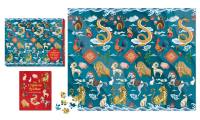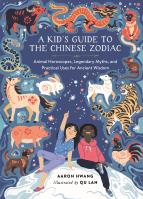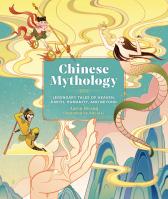Lunar New Year Rituals to Invite Good Luck Into Your Life
Dear Mystics, the Lunar New Year will soon be here! To learn how to bring good luck into your year, we turn to Aaron Hwang, author of The Chinese Zodiac And Other Paths to Luck, Riches & Prosperity, plus the middle-grade adaptation A Kid’s Guide to the Chinese Zodiac and the newly released Chinese Mythology.
Read on to learn about Lunar New Year and how to celebrate it (adapted excerpt courtesy of The Chinese Zodiac). Plus, find a profile of the 2025 Animal: the Wood Snake.
P.S. Did you know that your Chinese horoscope actually contains four animals? Discover your full horoscope with The Chinese Zodiac.

Global Traditions
While both traditions are sometimes referred to as Chinese, the Zodiac and Lunar New Year are both celebrated by numerous cultures around the world. Tibet, Korea, Japan, and Vietnam all celebrate Lunar New Years at almost the exact same time and often incorporate similar traditions, influenced by China’s role as an ancient imperial power. Mongolia’s Lunar New Year, Tsagaan Sar, begins exactly one lunar month earlier, at the first new moon after solstice, whereas many Muslim ethnic groups in Asia celebrate Nowruz on March 21. And of course, Lunar New Years are also celebrated by overseas populations around the world, from Indonesia to the United States!
The Chinese Zodiac’s story is similar. Although many of its roots trace back to China, it has also spread and evolved in different nations around the world. Identical or similar Zodiacs are observed in Korea, Japan, Vietnam, Cambodia, Thailand, and more places, sometimes with the exact animals modified to better match the local culture.
The Lunar New Year
The Lunar New Year is the biggest annual exodus in the entire world, a time when people go home to reunite with loved ones and usher in the new year together. The traditional celebration is a multiday affair—and considered a key time to refresh one’s luck and welcome in new fortune. In places where it’s widely celebrated, there is often a rush leading up to it, similar to the rush before Christmas in Western countries. Traditions and rituals around luck are amplified and deserve extra attention if the year is to start off right. Pay special attention to bad omens that may be lurking as those carry extra weight as well in this transitional period.

Fresh Start
In the days before Lunar New Year, families do an intense full-house cleaning. This is believed to sweep out bad luck and bad spirits so that the house is fresh and ready for the new year’s luck to flow inside. The same advice should be applied in reverse—try not to clean immediately after the New Year unless you want to sweep all that good luck back out again! Hair should not be cut because the homophone “fà” for “hair” sounds like the word for making money, which nobody wants cut short during such an auspicious time.
In Taoist and Buddhist households, altars and statues are cleaned, refreshed, and redecorated. Domestic spirit protectors, such as the Kitchen God, are given gifts of sweet food and their paper likenesses are burned, as this is the time when they return to Jade Emperor to report on the household’s conduct. New clothes and repaying debts are also considered good for procuring a fresh start.

Lucky Decoration
On the Lunar New Year, luck is literally hung from the walls. Houses and doors are decorated with red paper that have auspicious wishes and elaborate designs. Red is a symbol of joy, virtue, and life, and the word “hóng” (red) is a homophone for “prosperous.” One of the most common wishes to hang is the character “fú”, which literally means “good luck.” This character is inscribed in gold strokes upon a red paper diamond and hung upside down on walls and doors to welcome in fortune. These lucky papers are hung upside down because the Chinese phrase for “upside-down fú” is “fú dàole,” which sounds just like the phrase “luck arrives.”

Lucky Food
The most significant event of New Year’s Eve, and perhaps the entire New Year, is the reunion feast. After the ancestors are paid their respects, the living family shares in a bounteous dinner, often sharing foods chosen for their lucky associations. This lucky dinner represents both the fruit of the old year’s labor and the bounty of fortune the family hopes to consume in the new year. In the traditionally rice-farming South, niángāo (fried rice cakes) are featured for sounding like the phrase “raised higher every year.” In the North, jiăozi (dumplings) are eaten as they resemble the gold ingot of old and sound like the phrase “crossing of the midnight hour.”
Other lucky homophone dishes include:
- FISH (yú—sounds like “abundance”)
- SWEET RICE DUMPLINGS (tāngyuán—sounds like tuányuán, “reunion”)
- ORANGES (júzi—sounds like jí, “lucky”)
- APPLES (píngguŏ—invokes píng’ān, “safe and sound”)
- UNCUT NOODLES, whose long shape represents longevity
One thing to watch out for—if you have a bowl of rice at this or any dinner, try to avoid planting chopsticks vertically in it. The resemblance to incense sticks, which are burned for the dead, is an invitation of ill fortune.

Firecrackers, Lions, and Red
Starting with midnight on the eve of the New Year and lasting through the next day, firecrackers and other noisemakers are set off. Along with wearing the lucky color red, these noises and lights scare off any evil spirits that might still remain—particularly the monster Nian who symbolizes the old year.
Finally, Lion Dances may be performed to clear even the bravest of evil spirits from the premises. On New Year’s Day, dance troops manipulate a massive lion costume in a vibrant dance, traveling up and down the streets. Going to see a Lion Dance at your local Chinatown parade is another great way to chase off any unlucky spirits that may be haunting you.

Red Envelopes
The last iconic lucky practice of the Lunar New Year is giving well- wishes in lucky red envelopes. In this family exchange, the younger generation seeks out their elders. With a special bow called a kētóu (or kowtow) young people wish parents, aunts, uncles, and grandparents thanks, good luck, and a happy new year. In exchange, older family members present the youngsters with lucky red envelopes, called hóngbāo, which are filled with money. These lucky envelopes are thought to bring good luck, keep away bad spirits, and stave off old age. Ideally, the amount given should not include the number 4 in any way (as in $4, $40, $80 given through four $20 bills, etc.). Refresh yourself on lucky and unlucky numbers and consider giving a red envelope to someone special in your life.

Throw a Lunar New Year Party
The quintessential element of any Lunar New Year celebration is eating a communal meal. The holiday is about reunion and togetherness, as much as it is about looking forward to the fortune of a new year. If you can, gather with friends to share a special feast. If you can supplement it with lucky foods, decoration, and dress, so much the better! Prepare a clean house, noisemakers, or red envelopes to give. If you’re looking for inspiration, consider some of the lucky practices outlined in this chapter. Some people also like to include something related to the new Zodiac animal to represent and honor the new year.
When midnight comes, celebrate loudly. Just be careful to scare the evil spirits, and not your neighbors. If you’re looking for New Year well-wishes, Mandarin sayings include xīnnián kuàilè (Happy New Year), gōngxĭ fācái (wish you happiness and wealth), and jíxiáng rúyì (may you be as fortunate as you wish). Most important of all, try to approach the New Year with an open heart. One cannot always expect to be lucky, but anybody can wish for luck—for ourselves, for our loved ones. Wishing means we are active participants in our lives, and that there are things in life worth waiting for. As the next New Year approaches, move toward it with sure steps and clear eyes. Don’t forget that gratitude is to the past what wishing is to the future, an honoring of all that life has to offer. Celebrate all that you’ve accomplished so far, as it will fortify you moving forward.

2025: The Year of the Wood Snake
PRIMARY ASSOCIATIONS: secrecy, emptiness, adaptability, the unknown, yin
SEASON: early summer
INHERENT ELEMENT: Yin Fire
YEARS: 1929, 1941, 1953, 1965, 1977, 1989, 2001, 2013, 2025, 2037, 2049
Inner Fire
The Snake’s hours are nine to eleven a.m. It is a time of basking in the sun, of the world slowly warming, and of the gentle lull between the hectic morning and the productive midday. Associated with the mysterious element of Yin Fire, Snakes are less the roaring wildfire, more the quiet secret of life itself. They embody the pulsing warmth that separates a body from a corpse, that inner heat that cannot be seen or grasped yet makes us what we are.
The Mystery Below
Like the Rabbit, the Snake is deeply perceptive. However, whereas the Rabbit is perceptive of all things, the Snake specializes in seeing what lies under the surface. To a Snake, it is our outward appearances and mannerisms that are insubstantial. Snakes know what we show others is merely a performance, a mask for the occasion that cannot capture the soul. They excel both at piercing such masks and at perfecting masks of their own. This penchant for looking beyond and within makes them excellent psychologists, penetrating scholars, abstract creatives, and wise advisers. They may also do well in medicine, addressing the body practically while also keenly assessing the spiritual needs of the distressed.

Snake and the Element of Wood
The blossoming element of WOOD turns the Snake’s mysterious mind into a creative canvas. Wood Snakes have a knack for seeing through to the heart of things, and they are interested in trying to put their abstract ideas and feelings into terms that other people will understand. They are elegant and have broken social finesse down to a science. They have a talent for bringing beauty into empty space.
Black Tortoise, Joint Lord of the North
Ancient Chinese myth postulated that Tortoise and Snake were two halves of one whole—swift and slow, sharp and dull, flexible and hard, male and female—and only by joining together could they reproduce. Because of this, they were often depicted as a joint creature, a symbol of the mystic power in opposite forces united.
Together the Tortoise and Snake are considered one of the four Sacred Beasts (along with Azure Dragon, White Tiger, and Vermillion Bird) who each rule one point of the compass and one quadrant of the stars. Their title abbreviated to simply “Black Tortoise,” the Tortoise and Snake guard the North. Their constellation reaches from Pegasus through Aquarius and Capricorn to Sagittarius.

Mother of Mankind
Perhaps because the Snake has always been a mystic animal, with a unique and almost magic-looking method of locomotion, the ability to fully shed its skin, and a venomous mastery over life and death, the image of the Snake appears in many ancient Chinese deities. Nüwa, who is said to have shaped humanity from clay, is also known as the Snake Goddess, and in some depictions appears as a woman from the waist up and a serpent from the waist down.
Dive Deeper
Discover your full Chinese horoscope with The Chinese Zodiac and the companion wooden magnet set and puzzle. Help younger readers explore their own horoscopes with A Kid’s Guide to the Chinese Zodiac. And learn more about Black Tortoise, Nüwa, and other supernatural beings with Chinese Mythology.
Featured Titles
Related Articles
Featured Content
-
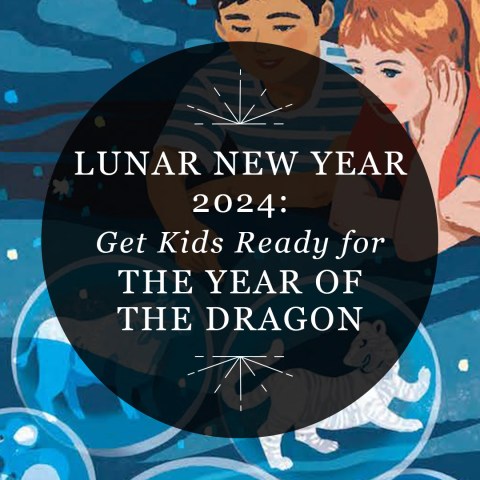
Lunar New Year 2024: Get Kids Ready for The Year of the Dragon
-

The Year of the Rabbit: Exclusive Excerpt from The Chinese Zodiac: And Other Paths to Luck, Riches & Prosperity
-

RP Mystic Celebrates the Magic of AAPI Heritage Month
-

Trickster’s Journey: Tarot Reimagined with Chinese Mythology
-
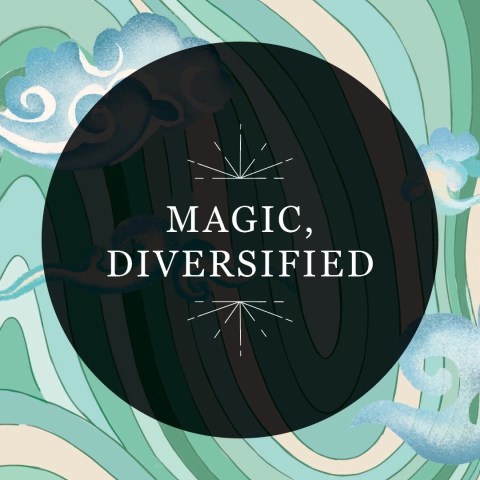
RP Mystic – Magic, Diversified







